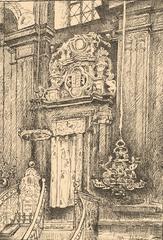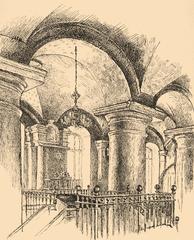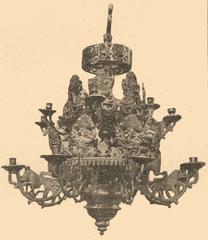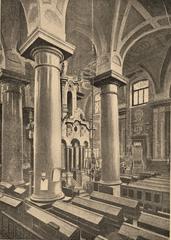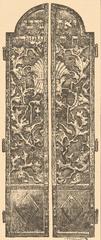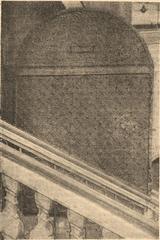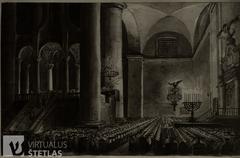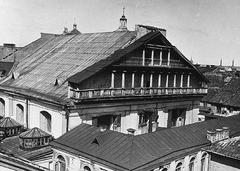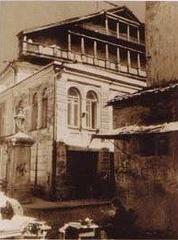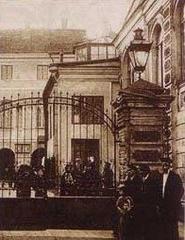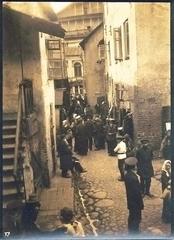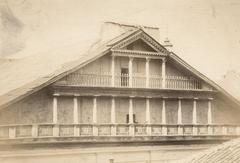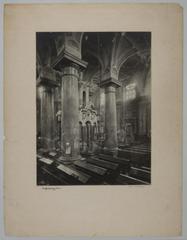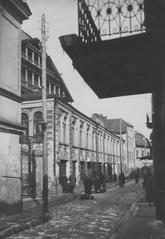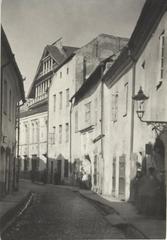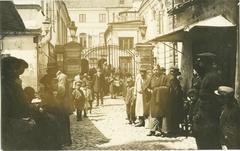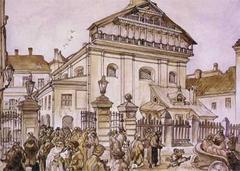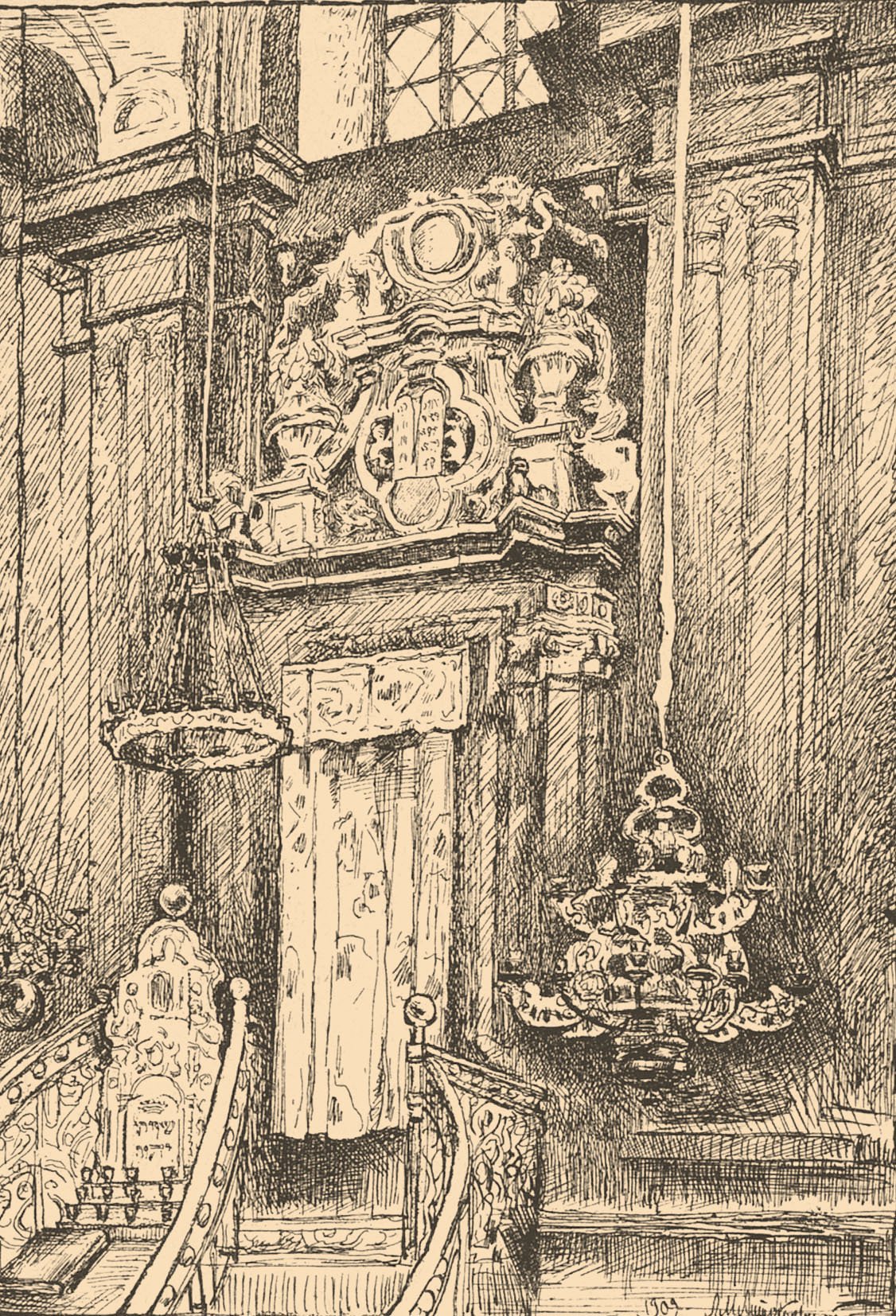
The Great Synagogue of Vilna: Visiting Hours, Tickets, and Historical Significance Guide
Date: 15/06/2025
Introduction
The Great Synagogue of Vilna, once the spiritual and communal heart of Lithuania’s Jewish community, stands as a powerful symbol of resilience and cultural heritage. Located in Vilnius, historically known as the “Jerusalem of the North,” the site embodies centuries of Jewish religious, intellectual, and social life. Though the original building no longer stands, ongoing archaeological work, digital reconstructions, and exhibits at the nearby Vilna Gaon Jewish Museum allow visitors to engage deeply with its legacy. This guide provides a detailed overview of the synagogue’s historical trajectory, architectural features, preservation initiatives, and all essential practical information for visitors, including current visiting hours, ticketing, accessibility, and nearby attractions (Jewish Heritage Lithuania, Go Vilnius, JTA, We Love Lithuania).
Table of Contents
- Introduction
- Historical Development
- Architectural Features
- Archaeological Rediscovery and Preservation
- Visitor Information
- Nearby Attractions
- FAQ
- Conclusion and Call to Action
- References
Historical Development of the Great Synagogue of Vilna
Foundation and Growth
The Great Synagogue’s history dates to the late 16th century, when Vilnius’s Jewish community was first permitted to construct houses of prayer. The earliest synagogue—wooden, built ca. 1572–1573—was replaced in 1633 by a grand brick structure, following a royal charter from King Władysław IV Vasa (Jewish Heritage Lithuania). This new Renaissance-style synagogue was built partly below ground to comply with local height restrictions on non-Christian houses of worship. By the 18th century, after devastating fires, it was reconstructed with Baroque influences by architect Johann Christoph Glaubitz, further enhancing its grandeur.
The Shulhoyf Complex
Surrounding the synagogue, the shulhoyf courtyard became Vilnius’s Jewish communal nucleus, housing:
- Twelve prayer houses (kloizn) for various guilds and study groups
- Ritual bathhouses (mikva’ot)
- Kosher butcheries and public facilities
- The renowned Strashun Library, a major Judaica repository
This complex supported not only religious life but also social welfare, education, and governance, reflecting the multifaceted vibrancy of the Jewish community (Jewish Heritage Lithuania, Smithsonian Magazine).
Destruction and Erasure
During WWII, the Nazis inflicted severe damage on the synagogue, and postwar Soviet authorities demolished its remains, replacing the site with a school. Only a few original artifacts—such as the Holy Ark’s door and bas-reliefs—survived, now displayed at the Vilna Gaon Jewish Museum (Wikipedia).
Architectural Features
The Great Synagogue was a Renaissance-Baroque marvel:
- Exterior: Built with two of five floors below street level, complying with regulations while achieving internal height and grandeur (World Jewish Travel).
- Interior: The main prayer hall could accommodate up to 3,000 worshipers. Notable features included an ornate bimah, elaborately decorated floors, and a women’s gallery (Ezrat Nashim) (Jerusalem Post).
- Artistic Elements: The Holy Ark (Aron Kodesh) and bimah were richly ornamented in Baroque style. Bas-reliefs of the Ten Commandments and other motifs adorned the walls.
Archaeological Rediscovery and Preservation
Archaeological Efforts
Since 2011, international teams have worked to uncover the synagogue’s remains beneath the Soviet-era school. Ground-penetrating radar and systematic excavations have revealed:
- Main floor sections with Renaissance-Baroque floral tiles (HeritageDaily)
- Parts of the women’s gallery and bimah
- Ritual baths and water reservoirs
- Wall paintings, inscriptions, and a trove of coins (LRT)
Digital 3D reconstructions and virtual tours enable visitors to experience the synagogue’s former splendor online (We Love Lithuania).
Preservation Initiatives
Preservation is coordinated by the Israel Antiquities Authority, Lithuanian Archaeology Society, the Good Will Foundation, Jewish Community of Lithuania, and Vilnius municipality. Techniques include:
- Artifact conservation and museum display
- Stabilization and digital documentation of exposed structures
- Plans for a memorial and educational center at the site (Israel365News)
Visitor Information
Hours and Location
- Archaeological Site: Žydų g. 3, Vilnius. Open daily 9:00 AM–6:00 PM for viewing interpretive panels. Excavation area access is restricted.
- Vilna Gaon Jewish Museum: Tuesday–Sunday, 10:00 AM–5:00 PM. Closed Mondays.
Tickets
- Synagogue Site: Free access to the outdoor panels; guided tour fees may apply.
- Museum: ~€5 per adult; discounts for students/seniors. Tickets at the museum or online (Vilna Gaon Jewish Museum Official Site).
Accessibility
- The museum is fully wheelchair accessible. The archaeological site has limited accessibility due to uneven terrain. Contact staff in advance for assistance.
Guided Tours and Tips
- Book guided tours through the Vilna Gaon Jewish Museum or local operators—these provide expert historical context and access to otherwise restricted areas.
- Combine your visit with other Jewish heritage sites in Vilnius, such as the Choral Synagogue and Jewish quarter.
Nearby Attractions
- Jewish Quarter: Historic streets, smaller synagogues, and cultural sites.
- Choral Synagogue: The only functioning synagogue in Vilnius.
- Paneriai Memorial: Holocaust remembrance site.
- Vilnius Old Town & Užupis District: UNESCO-listed and vibrant artistic neighborhoods.
Frequently Asked Questions (FAQ)
Q: What are the visiting hours for the Great Synagogue site?
A: Outdoor interpretive panels are accessible daily 9:00 AM–6:00 PM. The museum is open Tuesday–Sunday, 10:00 AM–5:00 PM.
Q: Is there an entrance fee?
A: The archaeological site is free; the museum charges ~€5.
Q: Are guided tours available?
A: Yes, arrange through the museum or local heritage tour operators.
Q: Is the site accessible to those with disabilities?
A: The museum is accessible; the site is partially accessible—contact ahead for details.
Q: Where can I buy museum tickets?
A: At the museum entrance or online.
Q: What other historic sites should I visit nearby?
A: The Choral Synagogue, Jewish quarter, Paneriai Memorial, and Vilnius Old Town.
Conclusion and Call to Action
The Great Synagogue of Vilna is much more than a lost edifice—it is a symbol of Jewish endurance, intellectual achievement, and cultural vibrancy in Lithuania. Through archaeological research, digital reconstructions, and museum exhibits, its story continues to inspire visitors from around the world. Plan your visit to this essential Vilnius historical site for a meaningful journey into the city’s Jewish past. For up-to-date visiting information, guided tours, and special events, download the Audiala app and follow us on social channels. Whether in person or online, the Great Synagogue invites you to reflect, remember, and connect (Jewish Heritage Lithuania, Vilna Gaon Jewish Museum, LRT, JTA).
References and Further Reading
- Jewish Heritage Lithuania: The Place of the Great Vilna Synagogue
- Go Vilnius: Great Synagogue Site
- LRT: Archaeologists Present Unique Findings
- JTA: Archeologists Uncover Floor of the Great Synagogue
- We Love Lithuania: Virtual Tour
- HeritageDaily: Rediscovered Splendour
- Israel365News: Excavations Reveal Destruction
- Wikipedia: Great Synagogue of Vilna
- Smithsonian Magazine: Remains of Lithuanian Synagogue
